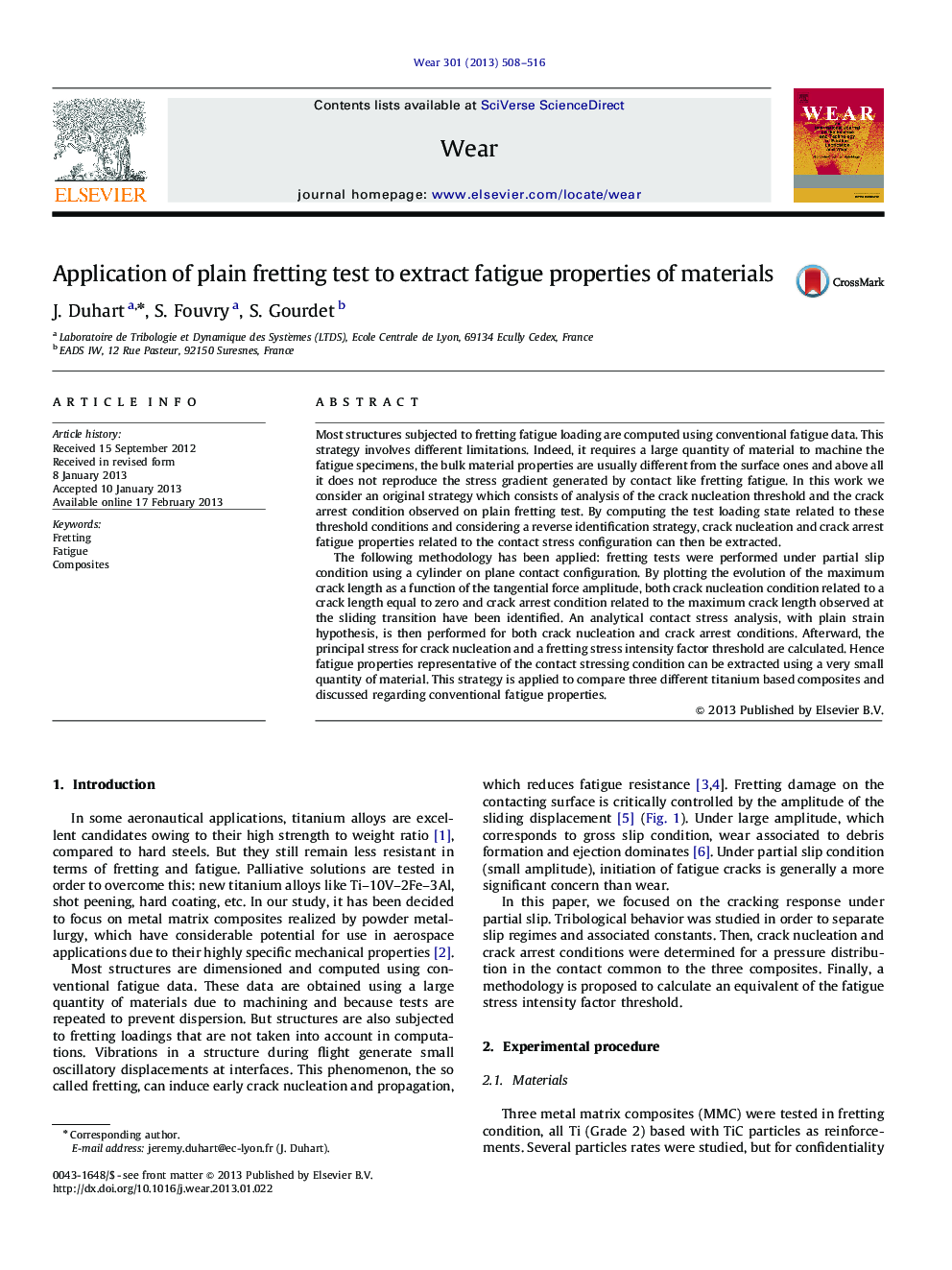| Article ID | Journal | Published Year | Pages | File Type |
|---|---|---|---|---|
| 617560 | Wear | 2013 | 9 Pages |
Abstract
The following methodology has been applied: fretting tests were performed under partial slip condition using a cylinder on plane contact configuration. By plotting the evolution of the maximum crack length as a function of the tangential force amplitude, both crack nucleation condition related to a crack length equal to zero and crack arrest condition related to the maximum crack length observed at the sliding transition have been identified. An analytical contact stress analysis, with plain strain hypothesis, is then performed for both crack nucleation and crack arrest conditions. Afterward, the principal stress for crack nucleation and a fretting stress intensity factor threshold are calculated. Hence fatigue properties representative of the contact stressing condition can be extracted using a very small quantity of material. This strategy is applied to compare three different titanium based composites and discussed regarding conventional fatigue properties.
Keywords
Related Topics
Physical Sciences and Engineering
Chemical Engineering
Colloid and Surface Chemistry
Authors
J. Duhart, S. Fouvry, S. Gourdet,
